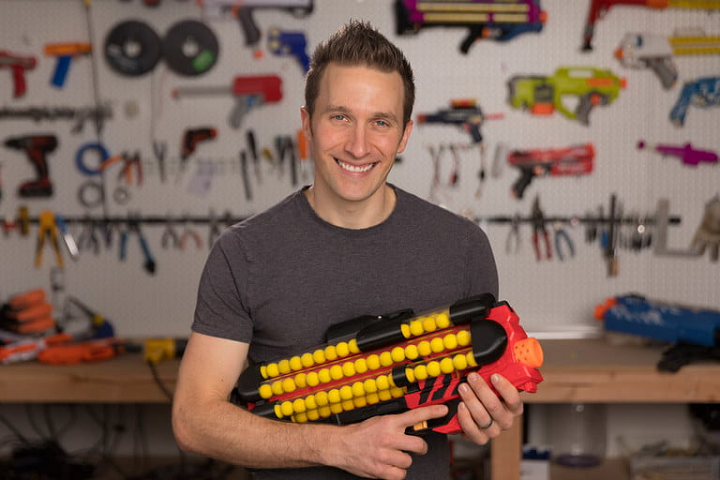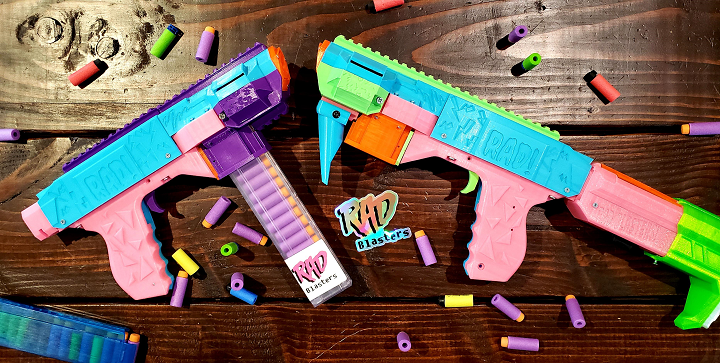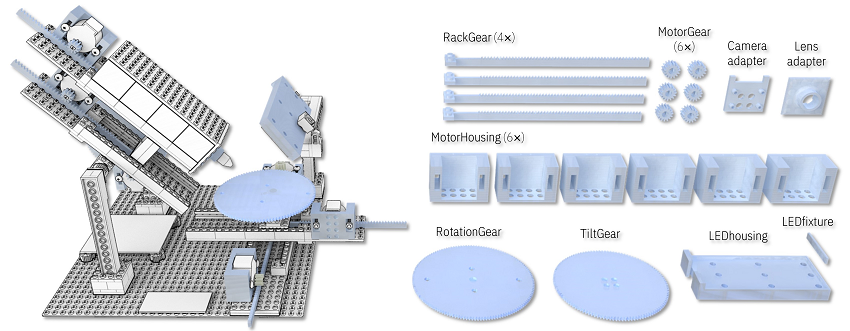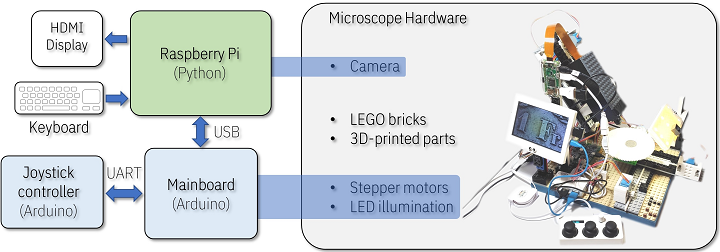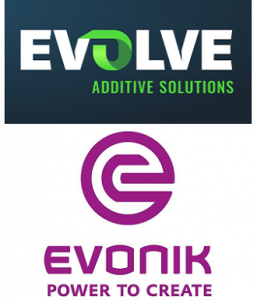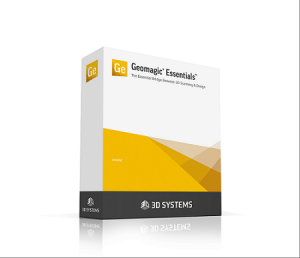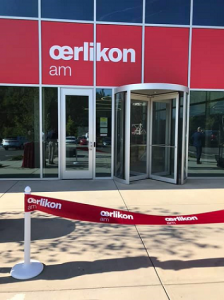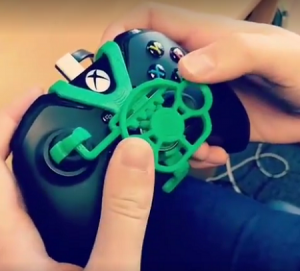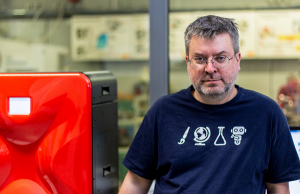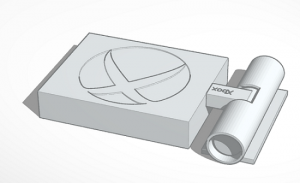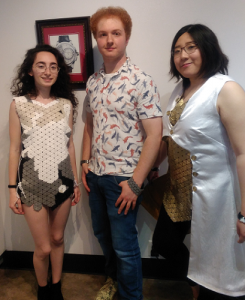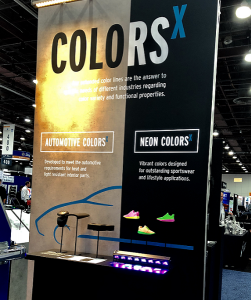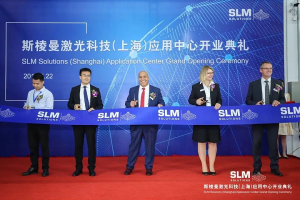We didn’t have a lot of NERF guns in the house growing up, but I do remember one specific NERF incident when I was older. I was home from college for winter break, and my family and I were stuck inside due to a snow emergency. We were getting restless and sick of watching TV, when someone – my mom, maybe – randomly picked up a NERF dart gun from behind her chair, aimed it at the map of Michigan hanging over the couch across the room, and fired. The game quickly evolved into seeing who could get the dart to stick the closest to where we vacationed each summer, and we all forgot we’d been bored.
Just like using 3D printing to increase the fun of LEGOs, so too can the technology be put to work with NERF weapons. NERF modding is the practice of adding hands-on modifications to your NERF guns, so their capabilities are enhanced.
“NERF blasters aren’t just for pre-pubescent boys — the resurgence of NERF is real and it’s happening now,” a Manual post states.
“Grown men are dipping back into the hobby and making hands-on modifications that increase the range and speed of the toys.”
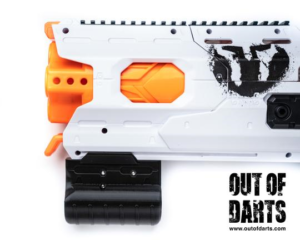
3D Printed Hades Pump Grip, $12 on Out of Darts
In the post, Luke Goodman, referred to there as “the surgeon general of NERF modifications,” describes the basics of modding a NERF Hammershot blaster gun. The former filmmaker wrote a popular book about Nerf modding, and also runs an online shop and NERF modification YouTube Channel called Out of Darts.
Goodman came up with some novel mods, like an air blaster that holds 1,200 rounds and shoots 15 rounds per second, and purchased a 3D printer so he could make his own modification parts. It’s now his full-time gig.
“There’s nothing better than taking something into your own hands and improving it — taking something old and making it new,” Goodman said. “For both kids and adults, getting them off video games, working with their hands, and interacting with the community can happen through NERF.”
Reddit user Pballwiz24 posted about his 3D printed hobby-grade NERF blasters, which look like they stepped right out of the 1990s. An appreciative person said they were “still amazed how much 3D printing has revolutionized homemade nerf guns and the nerf community as a whole,” and Pballwiz24 agreed, writing “It really helped launch the hobby to a whole new level.”
Another user wanted to know if the darts had to be cut down, and what was used for springs.
“Yeah they are cut to 39mm,” Pballwiz24 replied. “They use brushed motors with flywheels on them to compress and “throw” the dart out.”
He was asked if the model was available on Thingiverse, and while the answer was no, he did state that several of his other models were there under the search term “cowabunga.” I checked it out, and the first one I found was the Cowabunga! Foam Dart Blaster by user radblasters, which contains detailed instructions on how to 3D print your own.
“The key feature of this design is the fact that it uses a smaller solenoid than most other solenoid builds. The Solenoid I designed this around is about half the size of the 35mm ones that are currently popular, but it functions exactly as needed (at only 15mm stroke),” it says in the description.
“Other than that feature, this is basically a primary blaster crammed into the smallest form factor I could create. Fully built, this can get 130-140 FPS on 4x Honeybadger motors…and it can be select fire too!”
There are plenty of other NERF mod designs on Thingiverse as well, such as sights, scopes, barrel extensions, magazines and dart holders, and even this cool NERF-compatible Grappling Hook.
“Printed without raft/supports. The first 5-6 layers look a little rough for lack of supports but it builds just fine,” Thingiverse user hewmart wrote. “I printed: 100% infill .2mm layer height 2 shells 60mm/s travel but these settings are probably changeable.”
If you think you’d like to try 3D printing a NERF mod, but are a little intimidated by the process and don’t know where to start, fear not – you can find Nerf Mods: a Beginner’s Guide on Instructables, which introduces readers “to the vast world of Nerf gun modifications” with instructions that are easy to understand.
“Beginners can be easily repelled from the world of Nerf gun modding by seeing a modification “write-up” that seems complicated. Many modification write-ups do seem confusing at first. However, modding a Nerf gun isn’t very hard–It simply takes knowledge of how a Nerf gun works and how a mod should be executed. With this knowledge, modifying Nerf guns is quite simple,” the post states.
While the instructable doesn’t actually mention 3D printing, it’s still a very helpful guide, with details on a variety of different mods and the differences between NERF spring guns and pump guns. You can check out one of the YouTube videos in this article for help with some cool 3D printed NERF mods.
Have you ever 3D printed a NERF mod? Tell us about it! Discuss this story and other 3D printing topics at 3DPrintBoard.com or share your thoughts in the Facebook comments below.
The post Niche Made: Modding NERF Guns With 3D Printing appeared first on 3DPrint.com | The Voice of 3D Printing / Additive Manufacturing.

